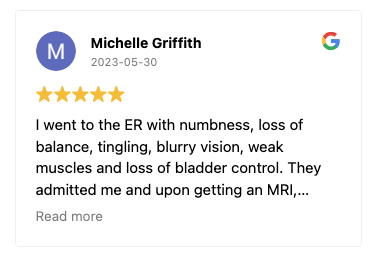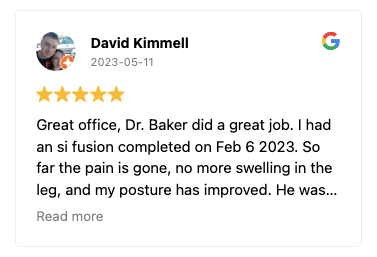Does Sciatica Cause Knee Pain?

Sciatica is a term that often conjures images of back pain, leg discomfort, and numbness, but can it also lead to knee pain? Many individuals suffering from sciatica experience a range of symptoms that can extend beyond the sciatic nerve's pathway, leading to unexpected areas of pain and discomfort, including the knee.
This post explores the intricate relationship between sciatica and knee pain, shedding light on how these two conditions might interconnect.
Understanding the link between sciatica pain and knee discomfort not only broadens our comprehension of this neural condition but also aids in effective management and treatment strategies.
A qualified neurosurgeon in Texas can help determine the impact that Sciatica may be having on your body and what treatment options are available.
Now, let's delve into what sciatica is, the symptoms associated with it, and why it may cause knee pain, exploring the biological pathways and medical insights necessary to grasp this complex interaction.
Understanding Sciatica and Its Symptoms
What is Sciatica?
Sciatica is a condition characterized by pain that radiates along the path of the sciatic nerve, which extends from the lower back, through the hips and buttocks, and down each leg. Typically, sciatica affects only one side of the body and is often a symptom of an underlying medical condition rather than a disease itself.
The most common symptoms of sciatica include:
- Nerve Pain: This is the hallmark of sciatica, described as a sharp, burning sensation or excruciating discomfort that can occur anywhere along the nerve's path.
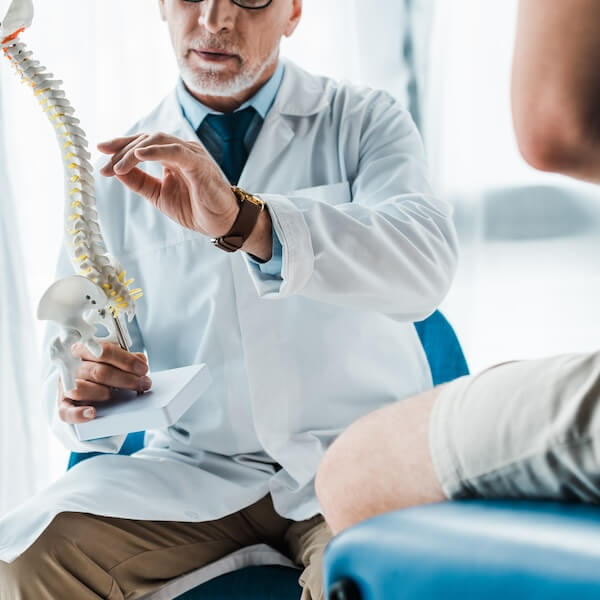
- Sciatica Symptoms: Beyond pain, symptoms can include tingling, numbness, or muscle weakness that radiates from the lower back down to the buttocks and legs.
- Lower Back Pain: While sciatica primarily affects the legs, it can also cause significant discomfort in the lower back, where the nerve roots are located.
- Weakness in the Leg or Foot: In more severe cases, sciatica can impair motor function, leading to difficulty in moving the affected leg or foot.
The intensity and frequency of sciatica pain can vary; some people experience infrequent and irritating discomfort, while others might endure constant and debilitating pain.
The underlying cause of sciatica often determines both the severity of the pain and the treatment options. Common triggers include herniated disks, bone spurs on the spine, or narrowing of the spine (spinal stenosis) that compresses part of the nerve.
This nerve compression causes inflammation, pain, and often some numbness in the affected leg.
Understanding the nature of sciatica is pivotal in addressing the broader question of whether sciatica can also be responsible for knee pain, as it illuminates the interconnectedness of the nervous system and musculoskeletal structures in the lower body
The Sciatic Nerve Explained
A neurosurgeon chooses a specific neurological surgery depending on the particular neurological disorder and the patient’s condition. There are different neurological surgeries, but the most common ones are here.
Role of the Sciatic Nerve in Bodily Functions
The sciatic nerve, the longest and widest nerve in the body, begins at the nerve roots in the lower back, specifically the lumbar spine, and extends through the buttocks and down the legs. This nerve is pivotal not only in facilitating movement but also in conveying sensory information from the feet to the spinal cord and brain, highlighting its comprehensive role in motor and sensory functions.
Pathway and Impact of the Sciatic Nerve:
- Origin: Starting from the lumbar spine, the sciatic nerve forms from several nerve roots that merge. It is vulnerable to compression from a herniated disc or spinal stenosis, which can ignite sciatica symptoms.
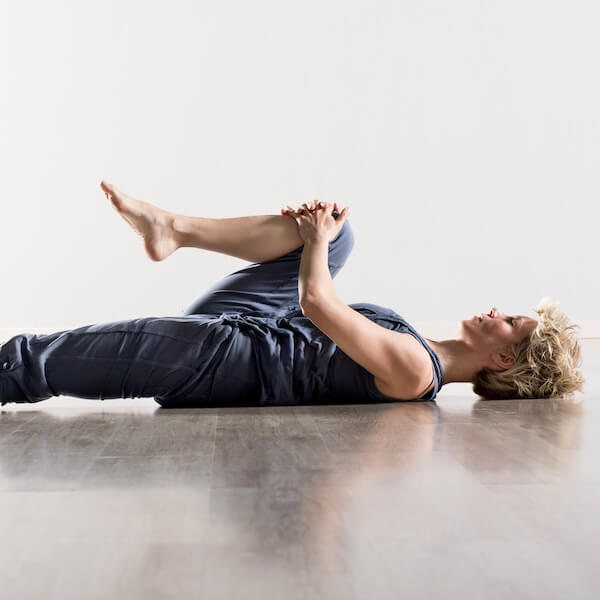
- Course: It traverses the pelvis, exits through the sciatic notch, and descends the leg, deeply embedded in the buttock and traveling down to the lower leg.
- Branches and Ends: At the knee joint, it branches into two paths that innervate the calf and foot, areas where symptoms such as tingling, numbness, and radiating pain are commonly experienced.
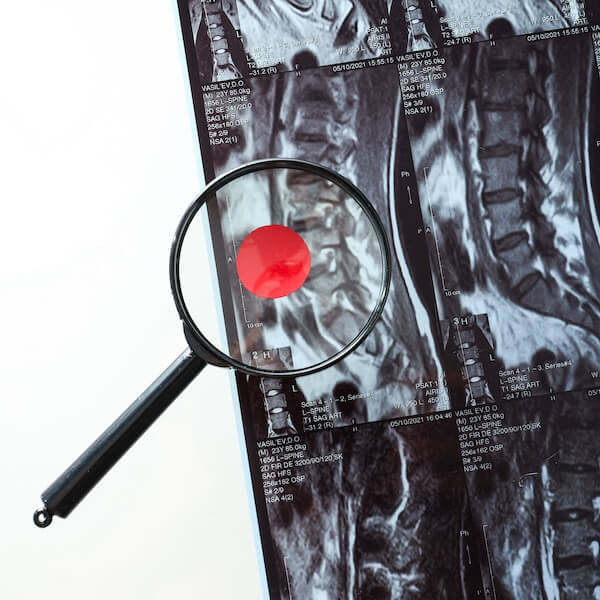
Function and Symptoms:
- Motor Functions: It controls vital muscles that manage movements like walking, knee flexion, and foot movements. Disruption in its function due to sciatic pain can lead to weakness or paralysis of these muscles.
- Sensory Functions: The sciatic nerve is crucial for sensation in the legs. Irritation of the nerve can result in symptoms ranging from debilitating sciatic nerve pain to more acute sensations like tingling or tightness in the thigh, leg, or foot.
Relation to Knee Pain:
- The extensive coverage of the sciatic nerve explains why disturbances in its function due to conditions like lumbar herniated discs or nerve root compression can lead to knee pain. The pain relief for such conditions often involves treatments that reduce the pressure on the nerve roots and alleviate inflammation, such as physical therapy, use of a sciatic nerve brace, or medications.

Relation to Knee Pain:
- The extensive coverage of the sciatic nerve explains why disturbances in its function due to conditions like lumbar herniated discs or nerve root compression can lead to knee pain. The pain relief for such conditions often involves treatments that reduce the pressure on the nerve roots and alleviate inflammation, such as physical therapy, use of a sciatic nerve brace, or medications.
Understanding the pathway and role of the sciatic nerve, from where the sciatic nerve starts in the lower back to where it branches near the knee, is essential for diagnosing and treating the radiating pain that often manifests around the knee and lower extremities. This comprehensive approach ensures targeted sciatica relief, enhancing overall health and mobility.
Sciatica and Knee Pain Connection
Does Sciatica Cause Knee Pain?
Exploring the relationship between the sciatic nerve and knee pain is essential for understanding how this nerve condition can extend its effects from the lower back down to the knees.
Sciatica primarily targets the lower spine and legs but its influence often reaches the knee, manifesting as distinct knee pain which perplexes many experiencing this radiating discomfort.
Biomechanical Influence on the Knee
The presence of sciatica can result in nerve irritation that triggers pain spreading through the hip and thigh, reaching into the knee.


This phenomenon, characterized by radiating pain, is a common symptom of sciatica due to the sciatic nerve’s extensive reach from the lower back, past the groin, and down the legs.
The proximity of the knee to the nerve's pathway makes it a likely site for such discomfort. Additionally, individuals suffering from sciatica might change their walking style to ease other symptoms, inadvertently putting extra stress on the knee joints and exacerbating the pain in that area.
Treatment and Management Approaches
Engagement in specially designed physical therapy exercises that focus on stretching and strengthening the muscles around the spine, hips, and knees can alleviate the pressure on the sciatic nerve, easing both back pain and knee pain.
Recognized widely in medical journals, physical therapy stands as a cornerstone for managing sciatica and related knee issues. Supporting the affected areas with a sciatic nerve brace or knee brace offers compression and stability, reducing tightness and enhancing comfort.
These braces are typically designed to be one size fits all, providing adjustable and customizable support. The application of heat to the lower back and hips can also relax muscles and lessen the tightness contributing to sciatica pain. If inflammation is a significant factor, medications may be prescribed to reduce these symptoms and offer relief.
Consultation with Healthcare Providers
Routine visits to a doctor are crucial for anyone dealing with sciatica. Healthcare professionals can provide valuable insights into symptom management and tailor treatment plans that might include physical therapy, medications, or in more severe cases, surgery.
Beyond immediate symptom relief, managing sciatica effectively involves long-term strategies aimed at enhancing spinal health. This includes maintaining an active lifestyle with regular exercise to strengthen back and leg muscles, practicing proper posture when engaged in activities such as standing or sitting for extended periods, and integrating supportive practices like using braces when necessary.
In essence, while sciatica does not directly cause knee pain, its symptoms often extend into the knee area, creating a complex pattern of discomfort that requires careful and comprehensive management. Effective treatment combining physical therapy, support through braces, and strategic medical interventions can significantly reduce the impact of sciatica on knee health, improving overall well-being.
Common Causes of Sciatica
Sciatica is often the result of several underlying medical conditions that exert pressure on or cause irritation to the sciatic nerve. Understanding these triggers is crucial for targeted treatment and effective management of sciatica symptoms.
The sciatic nerve runs from the lower back down through the buttocks and into the legs, making it susceptible to various compressive forces along its lengthy pathway. One of the most common causes of sciatica is a herniated disc in the lumbar spine. This condition occurs when the soft gel inside a disc escapes through a tear in the disc's exterior, pressing against the adjacent sciatic nerve. The pressure exerted by this herniation can inflame the nerve, leading to the characteristic shooting pains of sciatica.
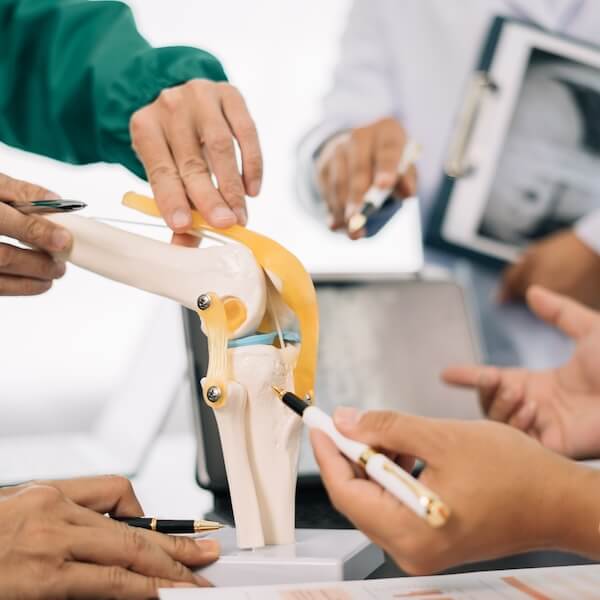
Spinal stenosis, another prevalent condition, involves the narrowing of parts of the spine due to aging or degeneration. This narrowing puts additional pressure on the nerves traveling through the spine, including the sciatic nerve. For individuals who stand or sit for long periods, the constant posture can exacerbate the compression and irritation, intensifying sciatica symptoms.
Arthritis, particularly osteoarthritis, can also lead to sciatica as it causes the joints in the spine to become inflamed and swollen. This inflammation can affect nearby nerves, including the sciatic nerve, particularly in the hip and thigh areas, where the nerve branches out extensively.
In some cases, the piriformis muscle, located in the buttock region, can spasm and compress the sciatic nerve, leading to pain. This specific cause is known as piriformis syndrome and is notable for the acute pressure point pain it creates in the buttocks and along the sciatic nerve's path.
To address these issues, medical treatments often focus on relieving pressure and reducing inflammation. Physical therapy, sciatica braces, and acupressure are common non-invasive methods used to alleviate discomfort. Acupressure, especially, targets specific pressure points along the leg to relieve pain and improve nerve function. For those with severe symptoms, more invasive procedures like surgery may be considered to remove the source of nerve compression.
By understanding these common causes and implementing appropriate treatments, individuals suffering from sciatica can often see significant improvements within a few weeks, leading to less pain and better mobility.
Diagnosing Sciatica
Diagnosing sciatica accurately is essential for effective treatment and management of this nerve-related condition. The process typically begins with a detailed medical history and a physical examination by a healthcare professional, often a doctor specializing in spine health or neurology.
During the initial consultation, patients are usually asked about the specific nature of their symptoms, such as the location and type of pain, whether they experience pain that radiates down the leg, and any activities or postures that worsen or alleviate the symptoms. This information helps in identifying the characteristic patterns of sciatica pain and distinguishing it from other types of back pain.
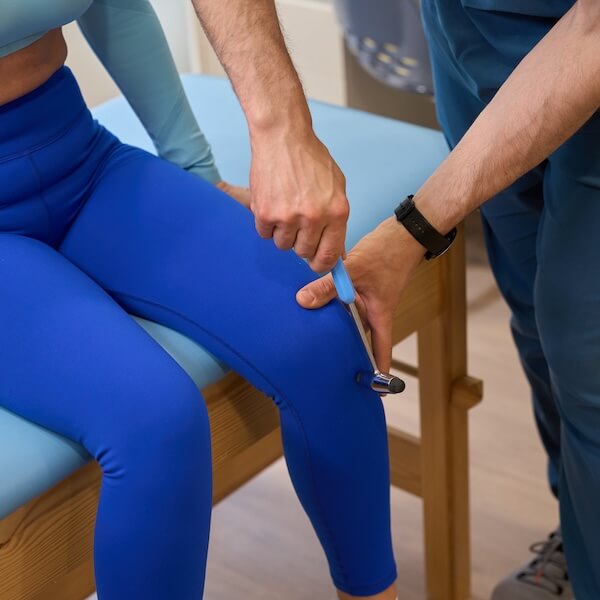
A physical examination includes various maneuvers to assess the nerve function and pinpoint the source of the nerve irritation. One common test is the straight leg raise test, which involves lifting the affected leg to see if the movement triggers sciatica pain. This test can help determine if the pain is related to the sciatic nerve and how the nerve responds to stretching, indicating possible nerve root compression.
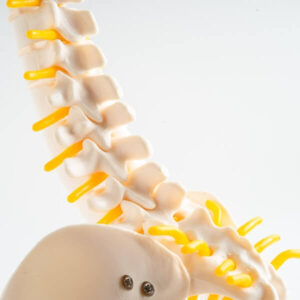
In more complex cases, where the doctor suspects that underlying issues like a herniated disc or spinal stenosis are causing the sciatica, imaging tests such as MRI (Magnetic Resonance Imaging) or CT (Computed Tomography) scans may be recommended. These imaging techniques provide detailed views of the spinal structures, allowing for precise identification of any abnormalities that may be pressing on the sciatic nerve.
Additional diagnostic methods may include electromyography (EMG), which measures the electrical impulses of muscles to assess the health of muscles and the nerve cells that control them. This test can be crucial in determining the extent of nerve damage and the specific nerve roots that are affected.
Overall, a thorough diagnostic process is critical to ensure that the treatment for sciatica is tailored to the individual's specific condition, enhancing the effectiveness of medical treatments and leading to better health outcomes. Understanding the root cause of the sciatica symptoms allows healthcare providers to develop a comprehensive treatment plan that addresses both the pain and the underlying issues causing it.
Dr. Abdul Baker - An Expert Neurosurgeon in Texas
Every neurosurgery has its complications; thus, a patient must choose the best neurosurgeon for himself. Dr. Abdul Baker is one of the most experienced and qualified neurosurgeons in Texas, treating patients for more than 16 years. People in Sherman, Plano, and nearby areas trust him for every kind of neurosurgery due to his surgical procedures’ 100% success rate. You may visit him if you need any consultancy or treatment regarding your brain and spine disorders.


Dr. Baker specializes in neurosurgery, neurosurgical spine surgery, neurotrauma, brain tumors, spinal tumors, and peripheral nerve damage treatment.
